You are using an out of date browser. It may not display this or other websites correctly.
You should upgrade or use an alternative browser.
You should upgrade or use an alternative browser.
WineXpert Waldo's Lodi Ranch II Cabarnet Sauvignon
- Thread starter Waldo
- Start date

Help Support Winemaking Talk - Winemaking Forum:
This site may earn a commission from merchant affiliate
links, including eBay, Amazon, and others.
The cab is nearing the end of fermentation and has definately developed tremendously in the nose area. It is at .996 for the second day now so I will give it until this evening and if it has not dropped any lower I will go ahead and stabilize.
Interested in your opinion once aged a few months Waldo. When they use the term "Lodi" in the name of the wine, like Lodi, Old Vines Zin, or the wine you are making, I assume they are refereing to a specific region of California that the Grapes were grown? Would that be correct?
If it is, your in for a treat if you can let it age for 2 years.
The Old vines, suppose to get it's earthy flavor from the deep roots of the Older vines. Those earthy tones in the LOVs Zin is incredible. Much like the red clay flavor we savor in our Muscadine wine, but in the Old vines, much more subtle, and blends well with the fruit and pepper taste.
Take good notes.
If it is, your in for a treat if you can let it age for 2 years.
The Old vines, suppose to get it's earthy flavor from the deep roots of the Older vines. Those earthy tones in the LOVs Zin is incredible. Much like the red clay flavor we savor in our Muscadine wine, but in the Old vines, much more subtle, and blends well with the fruit and pepper taste.
Take good notes.
I think George may be better qualified to answer that question jobe. I talked to my friend at work who I am making this one for and he has agreed that we will bottle one gallon of it in 375 ml bottles which will allow for some testing as it ages. I will keep this thread going with tasting notes as it ages. Might even bring a couple of bottles of it to Winestock this year
geocorn
Vendor
- Joined
- Jul 4, 2004
- Messages
- 2,096
- Reaction score
- 12
The Lodi Ranch II cab is the old Woodbridge Ranch Cab. Same grapes, just different name. Woodbridge Ranch is a name owned by Robert Modavi and he took exception to Winexpert using his name. Since the grapes come from the Lodi region of California, they changed the name accordingly.
To my knowledge, this is not an old vines kit, but it is one of the best cab kits on the market. I have yet to hear any complaints. I do however get a lot of happy customers with this kit. It tastes good at 6 months, but if you can give it a full year, you will be amazed at the quality of this wine. (I think I have said that about a lot of wines!
 )
)
To my knowledge, this is not an old vines kit, but it is one of the best cab kits on the market. I have yet to hear any complaints. I do however get a lot of happy customers with this kit. It tastes good at 6 months, but if you can give it a full year, you will be amazed at the quality of this wine. (I think I have said that about a lot of wines!


$6.99 ($0.35 / Count)
Red Supply Solution Wine Grape 20 Seeds - Vitis Vinifera, Organic Fresh Seeds Non GMO, Indoor/Outdoor Seed Planting for Home Garden
ORGINBUD LLC

$14.80
$24.00
The Geography of Wine: How Landscapes, Cultures, Terroir, and the Weather Make a Good Drop
Amazon.com

$74.99 ($74.99 / Count)
Delirious Trembles Belgian Golden Strong Ale, Beer Making Extract Kit
Boomchugalug

$65.48 ($65.48 / Count)
Complete Fruit Wine Base Kit-Cherry 128oz, EC-1118, Potassium Sorbate, Campden Tablets
Home Brew Ohio

$169.50 ($169.50 / Count)
Wine Ingredient Kit - CRU SELECT Australia Style Chardonnay
Bridgeview Beer and Wine Supply

$155.96 ($155.96 / Count)
Winexpert Revelation Napa Cabernet Sauvignon 3 Gallon (Limited) Wine Ingredient Kit
Discount Hydroponics LLc
Thank you for that info George. I stabilized the wine this morning at an SG of .996. Hopefully my new camera will be in today and I can get some more pictures. Oh, I didn't tell all of you that story did I. Well, last weekend, on a fishing trip I managed to lose my Nikkon digital camera. I had got back to the boat dock and remember picking up the camera off the console of my boat and after that..don't know what the hell I did with it but it was not in my truck or boat when i got home. Oh well, part of the price of getting old I guess.
Robert Mondavi has his roots in Lodi, he graduated from Lodi High and comes back here periodically for a winemakers dinner. I live about 1/2 mile from the Robert Mondavi Woodbridge facility. Lodi is not well known for our cabs, Zins mainly. And now some great Spanish varietals. I would really like to know from the WE folks where they source their Cabs. There are some 'good' cabs, nothing comparable to the Napa region.
Friday evening I worked on degassing the cab. Using my drill mounted stirrer. I stirred it, in both directions for probaly around 8-10 minutes total and then I added the clarifier. Sediment began falling quickly so I put the carboy cover back on it and let it sit. This morning I drew off a small sample and it still tasted pretty gassey. I poured the sample into a 175 ml bottle and used the ole thumb over the hole and gave it a good shaking and I got quite a puff of gasses when I released my thumb, My next move was to use my carboy cap and Vacu -Vin. I had seen some posts by members who had used this method but I had never tried it myself. I was quite impressed by how effective it was in degassing the wine. The cab is now degassed and clearing and I still can't take any pictures yet as my camera did not make it today either. I tried taking some with my phone camera but the color was horrible in the incadescent light as you can well see.
 Edited by: Waldo
Edited by: Waldo

Waldo, I have used both the Vacu-vin and a brake bleeder for degassing. I am also pretty impressed with the outcome I got. The only thing is that it is still difficult to really know when you are done. I like the 175 ml bottle idea, I will try that next time.
rgecaprock
Senior Member
- Joined
- May 3, 2005
- Messages
- 2,195
- Reaction score
- 0
Does anyone have a picuture using the Vacuvin?How to tell when to stop and can you vacuum too much? What's this I read about carboy implosion?


I don't think you could implode a carboy with a vacuvin, or MityVac for that matter. I know you can implode a gallon jug with a food bag sealer, been there done that.
I use the MityVac to degas my wines in the carboy, and always at bottling. I get a lot of CO2, and what I think are small air bubbles out at higher vacuum's on smaller bottles that the bigger ones (carboys).
I do have a unit, something similar to the vacuvin that I use on open bottles, to keep them fresh, but have never used it to degas. I might give it a try, and judge the vacuum by the size of the bubbles I get from the MityVac.
I was searching the internetone day for a signature (bottom of Post), and foundthe one I'm using. I see you have the same one.Edited by: jobe05
I use the MityVac to degas my wines in the carboy, and always at bottling. I get a lot of CO2, and what I think are small air bubbles out at higher vacuum's on smaller bottles that the bigger ones (carboys).
I do have a unit, something similar to the vacuvin that I use on open bottles, to keep them fresh, but have never used it to degas. I might give it a try, and judge the vacuum by the size of the bubbles I get from the MityVac.
I was searching the internetone day for a signature (bottom of Post), and foundthe one I'm using. I see you have the same one.Edited by: jobe05
No pictures, but George's last newsletter actually addresses the issue of knowing when to stop and how to use the vacu-vin. It basically states that the small bubbles up the side of the carboy are gas and the larger bubbles more towards the center are just from the vacuum. I struggle with knowing even still, but my latest batch seems pretty well degassed!!! I still use the mixer initially and then use the vacuum method after that.
rgecaprock
Senior Member
- Joined
- May 3, 2005
- Messages
- 2,195
- Reaction score
- 0
Yea, jobe
I really like that quote...it is so true.
I really like that quote...it is so true.
geocorn
Vendor
- Joined
- Jul 4, 2004
- Messages
- 2,096
- Reaction score
- 12
Joseph bought a MightyVac and we tried it out, yesterday. To be honest, I am not sold on the product. It seems like a lot more work that just using the drill mounted stirrer.
The most interesting aspect was that I have 14 carboys that have been stablized and fined waiting for the next bottling party. The MM kits had little to no CO2, while the WE kits still had some gas. All kits have been handled per the instructions and the WE kits were made in the middle of the MM kits. I would have expected the younger MM kits to have the most gas, they were fine.
Joseph and I were stumped!
The most interesting aspect was that I have 14 carboys that have been stablized and fined waiting for the next bottling party. The MM kits had little to no CO2, while the WE kits still had some gas. All kits have been handled per the instructions and the WE kits were made in the middle of the MM kits. I would have expected the younger MM kits to have the most gas, they were fine.
Joseph and I were stumped!
rgecaprock said:Does anyone have a picuture using the Vacuvin?How to tell when to stop and can you vacuum too much? What's this I read about carboy implosion?
Finally got me another camera ramona so here are a couple of pictures showing the vacu vin used for degassing. The pictures I believe are self explanatory of the process but I will be glad to answer any questions anyone may have. I would guess that I pulled vacum with it about 10-12 times before I quit getting any of the small bubbles.
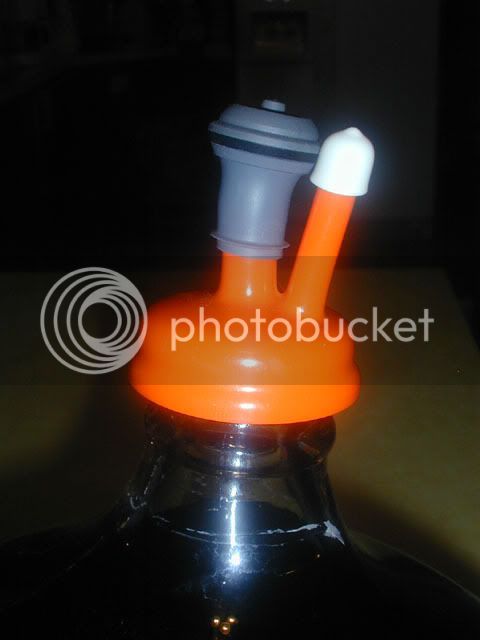
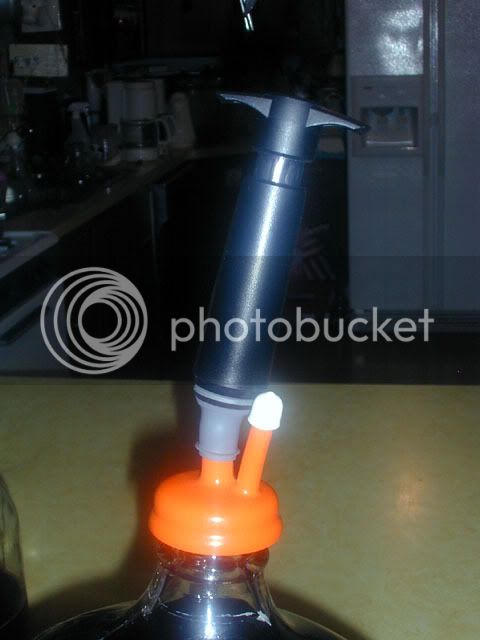
I had racked the cab about 2 weeks ago now and due to the lack of another 6 gallon carboy, I racked it into a 5 and a one gallon. I bottled what was in the one gallon carboy yesterday evening in 375 ml bottles and the following pictures are of the 5 gallon and what was left( including the sediment)in the one gallon after I racked off the sediment to bottle. It is developing very nicely, fruity and spicy nose and absolutely no gassy taste so the vacu vin did the job of degassing nicely. The 5 gallon I will continue to bulk age for at least another 2 weeks as I am seeing a trace of sediment in the bottom of it.
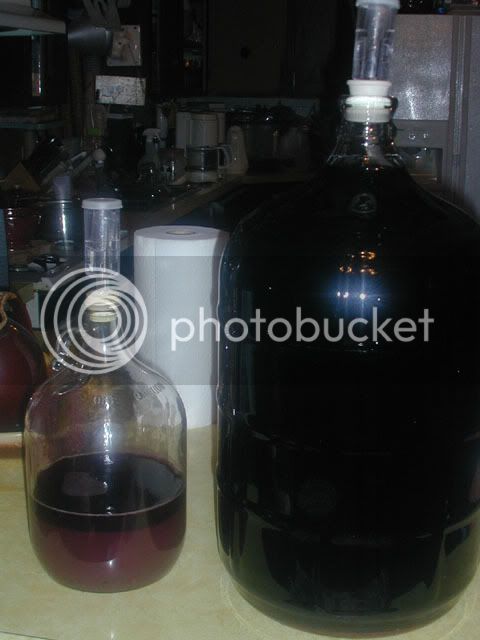
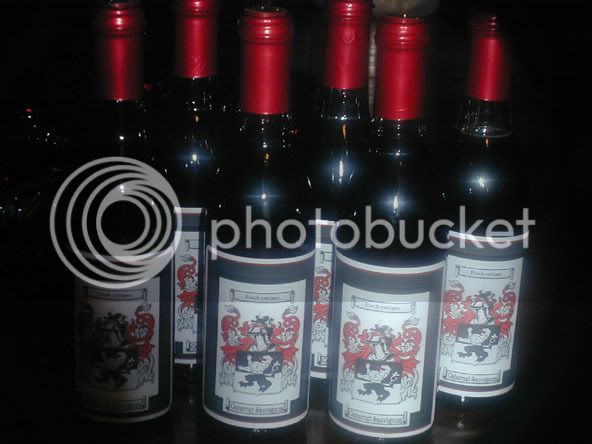
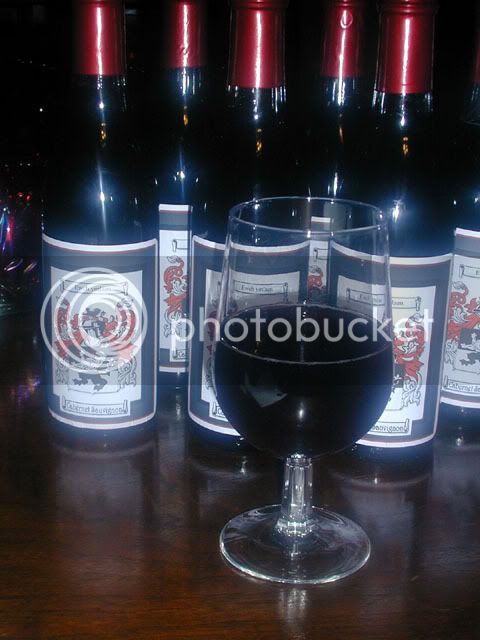



Similar threads
- Replies
- 1
- Views
- 749
- Replies
- 7
- Views
- 1K
- Replies
- 8
- Views
- 414
- Replies
- 13
- Views
- 1K





































